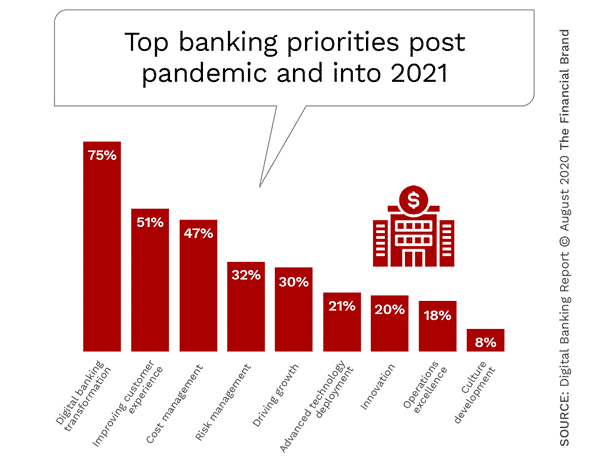Several drivers have come together to turbo charge this space. In a recent report, Boston Consulting Group (BCG) identified four marketplace changes that are driving the rapid move towards digital lending.
- Changing consumer behaviours
- Technological advancements
- Regulatory changes
- The fintech game changers
Breaking down the 4 drivers
Firstly, and most significantly, consumer behaviours have changed. People are spending more time online, with the pandemic pushing even the most reluctant users towards digital channels. Consumers now expect the same level of service and UX from financial services that they receive from the big techs and digitally-native service providers like Netflix.
They want convenience. This appetite is highlighted in new research by the Bank Administration Institute, which showed that a quarter of consumers consider convenience to be the most important factor when opening a new bank account; more important than both better rates (14%) or lower fees (10%).
Secondly, there have been widespread technological changes, from the increased use of, and reliance on, smartphones through to the ability for lenders to now conduct entire KYC processes online, without ever meeting the person face-to-face.
Thirdly, and complementary to technological advancements, changes in regulations and compliance around digital engagement (think the likes of GDPR and PSD2) have allowed digital lending processes to be modernised to the benefit of the consumer.
Finally, the innovations and simplified operating models of fintech providers have shifted the dial and driven the wider industry to improve. When a mortgage can be granted without a visit to a physical branch, or a new business loan can be applied for and disbursed in minutes, the entire industry needs to up its game.
A new year, a new priority
Moving from a traditional financial institution to a digital bank can be complex. There is often resistance to change, an inability to accept risks, and a lack of board desire to disrupt traditional norms. It becomes a cultural decision that’s tough to make.
But when the four drivers identified by BCG are combined, it’s clear that banks need to embark on a rapid digital transformation or else they risk being left behind. And they know it. The Financial Brand’s 2020 Digital Banking report highlighted that ‘digital banking transformation’ is the number one priority for banks in 2021.

The pandemic, and more specifically the introduction of emergency small business loan schemes like the Coronavirus Business Interruption Loan Scheme (CBILS) in the UK and the Payment Protection Program (PPP) in the US, forced many financial institutions to find ways to provide customers with digital lending solutions in a matter of days. This level of innovation, though prompted by a crisis, has shown exactly what’s possible.
Moving forward, when the richer data available thanks to Open Banking is combined with advanced analytics, revised back-office processes, and significantly lower costs, digital lending can become much more inclusive. Instead of only serving creditworthy small businesses and consumers, digital lending can extend to segments with less credit history, such as gig workers and start-ups.
Ultimately, the goal for banks must be to have their entire lending journey - from application, KYC, decisioning and disbursement, through to reporting and compliance – fully digitised, and at a speed comparable to digital engagement in other industries.
Partnering with ezbob
With a robust digital proposition for banks and financial institutions combined with our expertise as lenders, ezbob has evolved into one of the most advanced business lending solutions available.
We today provide the only bank-grade, automated solution for SME lending that covers the entire user journey as well as all compliance, risk and decisioning. The ezbob solution aggregates information from over 40 real-time API-connected data sources and presents accurate data that leads to better risk management and more informed credit decisions.
Get in touch today to find out more about how our lending solutions can help you digitise processes and transform your lending offering in 2021.
